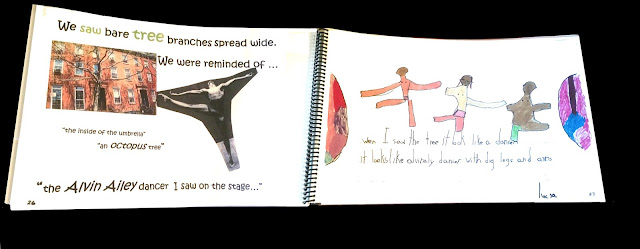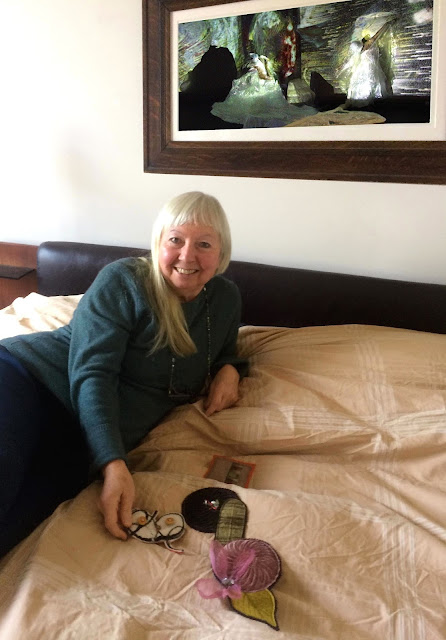Natalie Barkley Jones has a petite and elegant bearing, her soft modulated intonation belies the strength, and perseverance essential to her journey traveling through the multi-faceted worlds she has inhabited - a vortex of challenges and goals, once considered unattainable in an era when women were meant to be wives and mothers to the exclusion of anything else; constrained not only by society’s racial strictures, but by deeply held family and community traditions. “A woman is to be a complement to her husband”, was an oft-repeated mantra.
A delicacy of compassion and empathy toward her fellow beings has always been an underlying ethical component of Natalie’s life; from the early years in the 1960s and 1970s as the wife of the distinguished Rev. William A. Jones, Pastor of the Bethany Baptist Church in Bedford-Stuyvesant Brooklyn, where she raised four of their children, to becoming an Arts Administrator for AT&T, managing and amassing one of the largest, most diverse Corporate art collections in the country. Her involvement with visual arts continued when she worked with The Brooklyn Arts Council from 2000-2008 to increase literacy in Brooklyn public schools, and most recently as an Assistant working at the June Kelly Gallery, in Soho, NYC.
Despite a whirlwind of professional activity, Natalie has always found the time to fulfill her own passion to either draw, paint, or write children’s books, often based on stories from her childhood growing up in segregated Louisville, Kentucky where the family lived above her father’s Portrait Photography studio. Because of segregation, there were no schools for him to learn his craft so he taught himself, exhibiting a resilience and fortitude his daughter inherited.
When she was 18 years old, Natalie married a civil rights activist Minister: “…a beautiful man who traveled and preached all over the world…marched with Dr. Martin Luther King in Birmingham Alabama… went down to Mississippi for voter registration during the time when Goodman, Schwerner, and Chaney were murdered.” Over the next few years, there were periods of intense anxiety and despair. Natalie stayed home with the children, acutely aware of the danger and hatred scorching the country. “…I was scared stiff whenever he went away, slept with my two children…huddled together in my bed. It could be days before I knew his welfare…” The difficulty of communicating over the phone with her husband at a crucial time in American history galvanized Natalie into a period of fertile work: “.. art being a source of courage and a way of working through pain…” She would go downstairs in the middle of the night, wrapping herself tightly in a cocoon of beauty, allowing the art process to express both the exhilaration and bewilderment of the unknown.
STRANGE FRUIT, (1952-1966) is a mixed media painting that penetrates the underbelly of the nation’s psyche where evil is rooted in a boiling caldron of malevolence. The title comes from Billie Holiday’s song “…strange Fruit Hanging from the Poplar Trees…black bodies swinging in the southern breeze..” Sand is clinging to the all-white “hanging tree”, applied like a bandaged dressing for the weeping wounds of the lynched young men dangling from its branches.
SHE WAS ONCE THE BRIDE OF THE YOUNG PREACHER (1975) depicts a woman whose features are an amalgam of three generations - Natalie, her mother, and maternal grandmother - a female line of descendants looking through a generational window to the ascending rows of church pews; a gentle breeze blowing a diaphanous curtain of time from the past into the present.
IF HER DAUGHTER CAN HAVE NO VOICE SHE VERY WELL BE BURIED ( 1976 ) - a pen and ink drawing is a deafening scream for being heard in a bleak landscape of silence where the nakedly exposed, and faceless, having lost their identity are entombed into a vacuum of powerlessness.
In 1975, Natalie Jones began to sing her own song, deciding to go back to Brooklyn College to finish school, eventually getting a job as an Artist Teacher at the Health and Hospitals Corporation Addictive Disease Program at Kings County Hospital in Brooklyn. The clients related to Natalie’s enthusiastic interest in guiding them toward their singular visions through the language of art.
Natalie painted DARE I BELIEVE IN MYSELF, (1975-1978) “…feeling emotionally caught on a non-turning wheel…lodged tightly in my place within a glass box wherein onlookers can look through to see if the resident is on schedule with activity assigned to its role…” At that time, she could only have an inkling of her future, nor fathom the courage and confidence in her own abilities that she would summon to climb out of the suffocating casket of constraints into the sublime winds of change.
In 1977, when an opening came up at AT&T for an In-House Manager of their art assets, Natalie Jones was hired. She became an Arts Administrator working with the respected curator and consultant, Wayne Vesti Andersen, an M.I.T. Professor and art historian, who had built art collections for IBM, Wells Fargo, Northrop, and Texas Instruments. Eventually, Natalie became the Curator of the Collection traveling across the country to AT&T buildings accessioning works, rotating existing artwork among company sites, and adding artists of color and women to the extensive collection.
With a personal involvement and a penetrating eye, Natalie Jones worked with artists including Jennifer Bartlett, the Anni Albers estate, Elyn Zimermann, Beverly Buchanan, Sam Gilliam, Tony Berlant, Larry Kirkland, among many, many, others, commissioning work for Headquarter buildings. The company’s mission was “making environments that would ignite the imagination.” Realizing that assembling “corporate art” is an educational process, Natalie Jones also established employee art lending libraries and implemented art education lectures. A letter she wrote to her grandchildren in 2010 affirms her devotion and delight: “…I remember well each of the studio visits when I was acquiring art (3,000 + acquisitions) for the AT&T Corporation worldwide. What a wonderful time…artists…studios…receptions…openings…museums…lectures…travel… domestic and international….art and more art!…How blessed I was to awaken each day for 20 years to do that which I loved.”
POSTCARDS FROM ARTISTS IN THE AT&T COLLECTION:
3 images of 4 postcards apiece.
After retiring from AT&T, Natalie Jones worked from 2000-2008 as an Artist/Teacher for the Brooklyn Arts Council Literacy Visual Arts Program. School children (Kindergarten-2nd Grade) were given cameras to take photos of anything that interested them while taking a walk with the class around the neighborhood Then they would return to school and create drawings based on the photos and write a story. The results were bound into books that are fanciful, and poignant - the outside world seen through the eyes of exquisite innocence, literally spinning the world into somersaults of inventiveness.
PHOTO OF CHILDREN’S LITERACY TREE PHOTO AND DRAWING
I hold Natalie Jones in the highest regard. She is a woman with extraordinary vitality and a fiery spirit of independence. Her humanity is evident in the resonance of her speech and in the fervor of her attentiveness and consideration towards her fellow human beings. Natalie’s persona is enshrouded in “art” which has given her both refuge and a “voice” that is not a whisper, but a roar that commands to be heeded.
CLICK ON IMAGES AND THEY ENLARGE.
 |
| Natalie Barkley Jones looking at her drawing |
 |
| Natalie in front of Bruce Robbins' Sculpture at AT&T in 1985 |
 |
| Flag as Loin Rag - Watergate, charcoal on canvas 1972. charcoal on canvas, 72 x 50 inches |
 |
| Natalie's Library of over 2,000 books |
 |
| Strange Fruit, 40"x30", acrylic, sand and dental floss/canvas, 1964-1968 |
 |
| To Allow Her No Voice Is to Bury Her,14"x17", pen and ink/paper, 1976 |
 |
| The Way I Feel Today, 12"x18", woodcut on paper, 1977 |
 |
| Dare I believe in Myself, 26"x20", oil/canvas, 1975-1978 |
 |
| Detail: Dare I believe in Myself, 26"x20", oil/canvas, 1975-1978 |
 |
| Selection From AT&T Collection: (clockwise) Jaune Quick-to-see-Smith, Beverly Buchanan, Al Loving, Roy De Forest |
 |
| Selection from AT&T Collection: (clockwise) Jim Toia, Jene Highstein, Betty Woodman, Sam Gilliam |
 | |
| Selection from AT&T Collection: Bryan Hunt |
 | |
|
 |
| Brooklyn Art's Council Literacy Visual Arts Program: Tree and Alvin Ailey story |






















